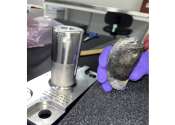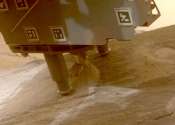NASA Goddard to build quake detector for Artemis III moon landing
NASA's Goddard Space Flight Center in Greenbelt, Maryland, will build a moonquake detector for astronauts to deploy on the moon in 2026 during the Artemis III mission, which will return astronauts to the lunar surface for ...







